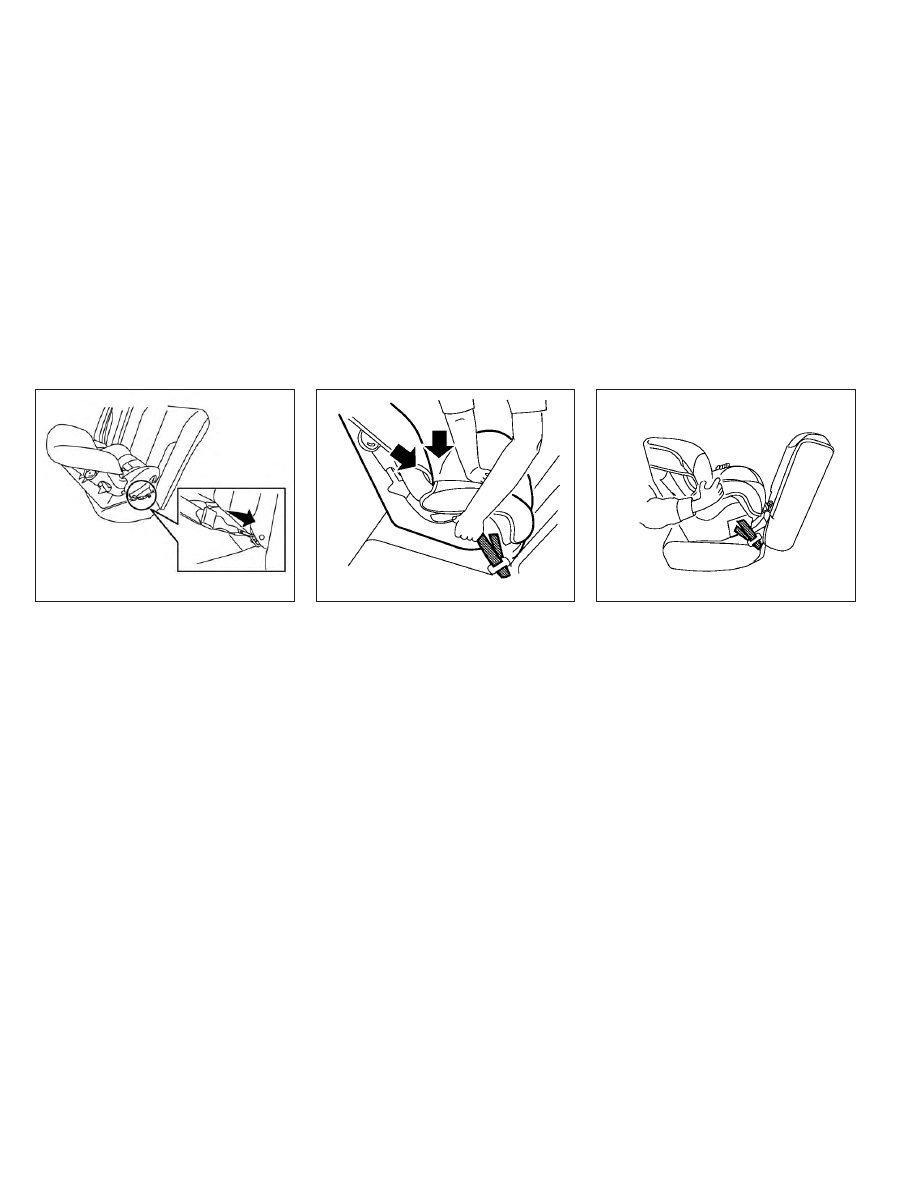Nissan Leaf (2023 year). Manual in english - page 9

3. For child restraints that are equipped
with webbing-mounted attachments,
remove any additional slack from the
anchor attachments. Press downward
and rearward firmly in the center of the
child restraint with your hand to com-
press the vehicle seat cushion and seat-
back while tightening the webbing of
the anchor attachments.
4. After attaching the child restraint, test it
before you place the child in it. Push it
from side to side while holding the seat
near the LATCH attachment path. The
child restraint should not move more
than 1 inch (25 mm), from side to side. Try
to tug it forward and check to see if the
LATCH attachment holds the restraint in
place. If the restraint is not secure,
tighten the LATCH attachment as nec-
essary, or put the restraint in another
seat and test it again. You may need to
LRS2997
Rear-facing rigid-mounted — step 2
SSS0639
Rear-facing — step 3
SSS0650
Rear-facing — step 4
Safety–Seats, seat belts and supplemental restraint system
1-29